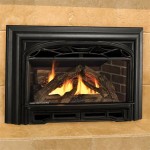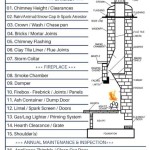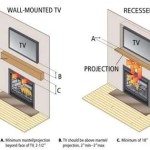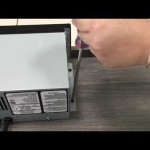How To Finish A Fireplace Surround With Wood
Finishing a fireplace surround with wood adds warmth, character, and a focal point to any living space. The process, while achievable for many homeowners, requires careful planning, precise execution, and an understanding of woodworking techniques. This article outlines the essential steps involved in successfully completing a wood fireplace surround, from initial preparation to the final finishing touches.
Planning and Preparation: Essential First Steps
The initial planning phase is critical for a successful wood fireplace surround project. This stage involves taking accurate measurements, selecting appropriate wood materials, and designing the surround to complement the existing aesthetic of the room. Neglecting these preparatory steps can lead to costly mistakes and a less-than-satisfactory final product.
Measurements and Design: Begin by carefully measuring the existing fireplace opening and the surrounding wall area. Document these measurements accurately, accounting for any irregularities or architectural features that may impact the surround's design. Consider the desired style of the surround. Do you prefer a traditional, ornate design or a more modern, minimalist look? Sketch out different design options, incorporating the measurements and desired aesthetic. Consider the proportions of the surround in relation to the fireplace opening and the overall room size. A surround that is too large or too small will detract from the overall visual appeal.
Material Selection: Selecting the right wood species is crucial for both the aesthetic appeal and the durability of the fireplace surround. Hardwoods like oak, maple, and cherry are popular choices due to their inherent strength, attractive grain patterns, and ability to accept stains and finishes well. Softwoods like pine and fir are less expensive but may be more susceptible to dents and scratches. Consider the existing trim and molding in the room when choosing a wood species. Selecting a species that complements or matches the existing woodwork will create a cohesive look. Also, consider the finish you plan to apply. Some wood species are better suited for certain finishes than others. Ensure the wood is properly kiln-dried to prevent warping or cracking after installation.
Tools and Materials: Gather all the necessary tools and materials before beginning the project. This will ensure a smooth and efficient workflow. Essential tools include a measuring tape, level, square, miter saw, table saw (optional, but helpful), drill, screwdriver, nail gun (optional), sandpaper, wood glue, clamps, safety glasses, and a dust mask. In addition to the wood, you will also need fasteners (nails or screws), wood filler, stain or paint (if desired), and a protective finish like polyurethane or varnish.
Safety Considerations: Prioritize safety throughout the project. Wear safety glasses to protect your eyes from flying debris and a dust mask to avoid inhaling wood dust. Always use power tools according to the manufacturer's instructions. Work in a well-ventilated area to minimize exposure to dust and fumes. Keep the work area clean and free of clutter to prevent accidents.
Construction and Assembly: Putting the Pieces Together
Once the planning and preparation are complete, the next step is to construct and assemble the fireplace surround. This involves cutting the wood pieces to the correct dimensions, joining them together securely, and ensuring the surround is level and plumb.
Cutting the Wood Pieces: Using the measurements from the design, carefully cut the wood pieces to the required dimensions. A miter saw is ideal for making precise angled cuts, while a table saw can be used for ripping larger boards to width. Double-check all measurements before making any cuts to avoid errors. Label each piece clearly to ensure correct assembly. When cutting, account for any kerf loss (the amount of material removed by the saw blade). This is especially important when making multiple cuts that need to be precise.
Assembly Techniques: There are several methods for joining the wood pieces together, depending on the design and the desired level of strength. Common techniques include using wood glue and screws, wood glue and nails, or mortise-and-tenon joints. For a strong and durable joint, apply wood glue to both surfaces before fastening. Use clamps to hold the pieces together tightly while the glue dries. When using screws, pre-drill pilot holes to prevent the wood from splitting. Counter-sink the screw heads slightly so they can be filled with wood filler later. If using a nail gun, adjust the pressure to prevent the nails from sinking too deeply into the wood.
Dry Fitting: Before permanently assembling the entire surround, dry fit all the pieces together to ensure they fit properly. This allows you to identify and correct any errors before the glue dries. Use clamps to hold the pieces together during the dry fit. Check for squareness and alignment using a level and a square. Make any necessary adjustments to ensure the surround is level and plumb.
Attaching the Surround to the Wall: Once the surround is assembled, it needs to be securely attached to the wall. Locate the wall studs using a stud finder. Use screws or lag bolts to attach the surround to the studs. This will provide a strong and stable connection. Ensure the surround is level and plumb before tightening the screws or lag bolts. If the wall surface is uneven, use shims to level the surround. Conceal the shims with trim or molding after installation.
Finishing and Detailing: Enhancing the Appearance
The final step involves finishing and detailing the fireplace surround to enhance its appearance and protect the wood. This includes filling any holes or imperfections, sanding the surface smooth, and applying a stain or paint followed by a protective finish.
Filling Imperfections: Use wood filler to fill any nail holes, screw holes, or gaps between the wood pieces. Apply the wood filler with a putty knife, pressing it firmly into the imperfections. Allow the wood filler to dry completely according to the manufacturer's instructions. Sand the wood filler smooth using fine-grit sandpaper. Feather the edges of the wood filler to blend them seamlessly with the surrounding wood surface. Choose a wood filler that matches the color of the wood, or one that can be stained or painted to match.
Sanding: Sand the entire surface of the fireplace surround smooth using progressively finer grits of sandpaper. Start with a coarser grit (e.g., 120-grit) to remove any imperfections and then move to finer grits (e.g., 180-grit and 220-grit) to create a smooth, even surface. Sand in the direction of the wood grain to avoid scratching the wood. Use a sanding block or orbital sander for larger surfaces. Wipe away the sanding dust with a tack cloth before applying any finish.
Staining or Painting: If you choose to stain or paint the fireplace surround, apply the finish according to the manufacturer's instructions. Use a high-quality brush or sprayer for even coverage. Apply multiple thin coats rather than one thick coat to avoid drips and runs. Allow each coat to dry completely before applying the next. Lightly sand between coats with fine-grit sandpaper to create a smooth surface for the next coat. Choose a stain or paint that is compatible with the wood species and the desired aesthetic.
Applying a Protective Finish: Apply a protective finish, such as polyurethane or varnish, to seal the wood and protect it from moisture and wear. Apply the finish in thin, even coats, using a brush or sprayer. Allow each coat to dry completely before applying the next. Lightly sand between coats with fine-grit sandpaper to create a smooth surface. Polyurethane is a durable and water-resistant finish that is ideal for high-traffic areas. Varnish provides a classic look and is available in a variety of sheens. Consider the level of gloss you desire when choosing a finish. Matte finishes are less reflective and hide imperfections better than glossy finishes.
Final Touches: Once the finish is dry, inspect the fireplace surround for any imperfections. Touch up any areas that need attention. Install any decorative trim or molding to add visual interest. Clean the surrounding area and enjoy your newly finished wood fireplace surround. Consider adding a mantel above the surround to provide a place to display decorative items. Make sure any items placed near the fireplace are heat-resistant and do not pose a fire hazard.

Building An Easy Modern Fireplace Mantel Young House Love

Diy Fireplace Finished Addicted 2 Decorating

I Built A Fireplace Easier Than Thought

Reclaimed Wood Fireplace Create A Sunning Surround

Diy Fireplace Makeover Wood Slat

How To Build A Fireplace Mantel Easy Diy Blossoming Life

Diy Fireplace Makeover Wood Slat

Easy Fireplace Mantel Diy

Diy Fireplace Finished Addicted 2 Decorating

Fireplace Mantel Wood N Finish Kit White Oak








